Types of Wood Flooring – A Guide for Homeowners
November 16, 2023 | By Bruce Product Expert
Wood flooring adds so many benefits to homeowners. It’s timeless in its appeal. It’s rugged and durable, so that it can take punishment. And it genuinely can last you a lifetime and then some.
It’s little wonder that wood floors have been homeowners’ staples and will likely continue to be so. Today, you can select from numerous types of wood flooring—everything from good, old-fashioned, genuine hardwood floors to luxury vinyl plank (LVP). Luxury vinyl does an impeccable job of mimicking real hardwood with similar durability.
If you’re a homeowner looking to update your flooring, knowing all the various types of hardwood flooring is worthwhile. Each has pros and cons, depending on where and how you want to use the flooring. So let’s dig deeper into the world of wood flooring.
Top Wood Species for Hardwood Flooring
Before addressing the types of wood flooring, let’s examine some of the top wood species. Your choices are seemingly endless, from domestic hardwoods to more exotic woods from across the globe. Here are some of the top wood species sought after by homeowners for their enduring beauty and exceptional performance:
Oak
The most popular species in the U.S., oak is a timeless and is widely for hardwood flooring. It boasts a distinctive grain pattern that adds character and charm to any room. Available in red and white oak variations, both types offer excellent durability and resistance to wear.
Red oak exhibits warm, reddish-brown hues, while white oak features a slightly cooler, yellow-brown tone. Oak flooring is versatile and works for various interior design styles, from traditional to contemporary.

Maple
Maple features a light, creamy color and subtle grain pattern. This hardwood species creates an elegant and refined atmosphere in any space.
Maple flooring is renowned for its exceptional hardness, making it highly resistant to dents and scratches. It’s a popular choice for high-traffic areas like hallways and living rooms. It’s more than capable of withstanding the demands of daily life.
Hickory
Hickory is distinctive, with bold grain patterns and natural color variations. Those variations range from light blond to rich brown tones.
As one of the hardest domestic hardwoods, hickory flooring is incredibly durable and ideal for homes with pets and children. Its rustic appearance adds a touch of natural beauty, making it perfect for country-style and farmhouse-inspired interiors.
Walnut
The rich, dark brown color of walnut flooring and elegant grain patterns exude luxury and sophistication. So it’s popular in upscale homes and formal living spaces.
Walnut isn’t as hard as some other wood species. But its unique beauty and color depth compensates for its slightly softer nature.
Cherry
Cherry wood flooring owns warm, reddish-brown tones that darken and develop a rich patina over time. This wood species offers a luxurious and inviting atmosphere, making it a popular choice for bedrooms and formal dining areas.
Cherry is moderately hard, but its stunning appearance makes it a captivating choice for homeowners seeking luxury.
Birch
Birch flooring features a fine, even grain pattern with light, creamy colors. It delivers a clean and contemporary look, well-suited for modern and Scandinavian-inspired interiors.
Birch is harder than other popular wood species like maple, making it a durable option for most areas in your home.

Ash
Ash wood flooring showcases a distinct grain pattern with light, pale colors that range from white to light brown. Its straight grain lends a clean and sleek appearance, ideal for creating a modern and airy feel in your home.
Ash wood is highly durable, making it suitable for active households.
Types of Wood Flooring
Now that you have some background in the most popular domestic wood species, let’s dig into wood flooring options. Even wood-look flooring does its best to imitate popular species. It’s common to see wood alternatives like laminate or LVP mimicking oak grain patterns, for example.
Solid Wood Flooring
The undisputed champ, solid hardwood flooring is natural wood from top to bottom. It provides the authentic look and feel that so many homeowners cherish. As mentioned, each wood species has unique characteristics. That enables you to select the color, grain patterns, and patina closest to your style.
You can feel the natural texture under your feet when walking on solid wood floors. It creates a connection with nature that’s hard to replicate with other materials.
Most important, it has a trait that other floor types lack. You can sand and refinish wood floors multiple times, allowing you to refresh their appearance over the years.
Solid hardwood’s one drawback is that it’s susceptible to water, whether standing or in humidity. As a result, it can expand or contract with fluctuations in moisture levels.
Engineered Hardwood Flooring
Engineered wood flooring is a modern marvel designed to offer beauty and stability. Its top layer consists of a real wood veneer. Underneath, it uses multiple layers of plywood stacked in different directions.
This construction minimizes the natural movement of wood, making engineered flooring more resistant to expansion and contraction due to humidity changes. And that’s its one substantial advantage over solid hardwood. So you can use it in places where solid wood floors are problematic.
Engineered wood’s versatility extends to its installation methods. You can install the flooring using glue or nails. You can also simplify things greatly by installing it as a floating floor.
This wood flooring is an excellent choice for spaces with varying humidity levels, such as basements and kitchens. However, it’s worth noting that engineered wood has a limited number of refinishing cycles compared to solid wood.
Laminate Wood-Look Flooring
Laminate flooring has gained popularity for its cost-effectiveness, ease of installation, and convincing wood-like appearance. It uses a high-quality photographic layer to replicate the look of natural wood. It includes a sealed, protective wear layer on top for enhanced durability.
With laminate wood-look flooring, you can enjoy the aesthetic appeal of wood. But you can do so without the same maintenance requirements of natural wood floors.
Laminate is highly resistant to scratches, dents, and fading, making it a fantastic option for busy households with pets and children. Furthermore, it’s generally more affordable than solid or engineered wood, making it an attractive choice for homeowners on a budget.

Luxury Vinyl Wood Flooring
Vinyl wood flooring is a practical and versatile alternative to traditional wood. It replicates wood patterns and textures with impressive accuracy. So you can achieve the desired aesthetics without the potential drawbacks of natural wood.
One of the primary advantages of vinyl wood flooring is its waterproof nature. It can withstand spills, moisture, and high humidity, making it suitable for bathrooms, kitchens, and basements.
Additionally, vinyl flooring is easy to clean and maintain, requiring minimal effort to keep it looking fresh and appealing. However, despite its near wood look appearance, it lacks the same warmth and natural ambiance as real wood. When you step on the flooring, you can sense it has a much softer feel.
Although LVP floors last 25 years on average, that falls far short of solid wood flooring. Still, it’s tough to beat luxury vinyl for wood-look flooring at its price point.
Factors to Consider When Choosing Wood Flooring
Before finalizing your wood flooring choice, take these factors into account:
-
Traffic: Consider the specific rooms where you’ll install the wood flooring. Some types are better suited for high-traffic areas like hallways. Others are more appropriate for low-traffic spaces like bedrooms.
-
Climate: Evaluate your local climate and how it may affect the wood flooring. Certain types of wood may be more suitable for humid regions, while others perform better in dry environments.
-
Maintenance: Be realistic about how much time you can dedicate to maintaining your wood flooring. Some types may require more frequent cleaning and refinishing than others.
-
Budget: Set a budget for your flooring project and explore options within your price range. Remember to consider the long-term value and durability of the chosen material.
-
Longevity: Some wood flooring types require replacement in 20 to 25 years. Others will last for decades. You might spend less upfront but pay double if you have to replace your flooring.
Look to Bruce® for Your Wood Flooring Needs
Bruce® has long been a favorite for contractors and homeowners alike. We offer more than 350 engineered and solid hardwood flooring options. Plus, we’ve added luxury vinyl and engineered stone tile to our product offering.
Use our virtual flooring tool to see how our products look in your room. All you have to do is take a picture of your room and select the flooring. Then, let the app do the rest — you’ll see your selection in seconds.
When you’re ready to buy, you can find the closest distributor using our retailer locator. You’ll find our flooring in most major home centers throughout the country.

Ready to shop for flooring near you?
Use our retail locator to find where you can buy Bruce flooring.
Find a Store
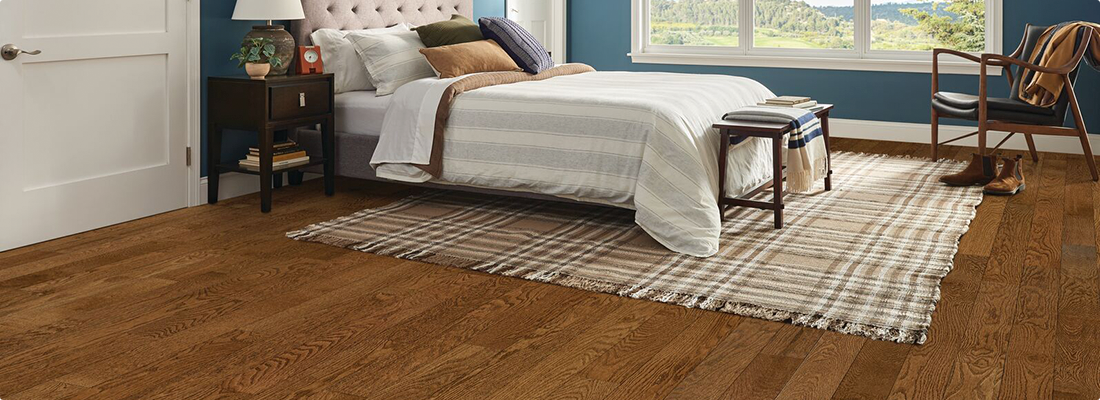
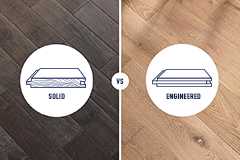 Solid vs Engineered Hardwood Flooring
Solid vs Engineered Hardwood Flooring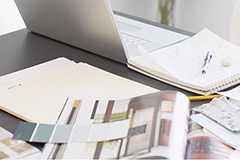 Guide To Choosing a Hardwood Floor
Guide To Choosing a Hardwood Floor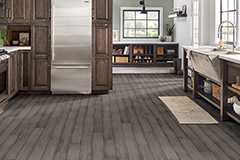 Hardwood Flooring Room Inspiration Guide
Hardwood Flooring Room Inspiration Guide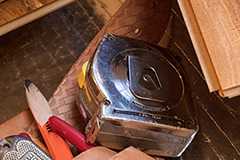 10 Things to Know About Hardwood Floor Installation
10 Things to Know About Hardwood Floor Installation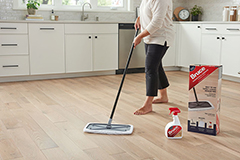 How To Clean and Protect Hardwood Flooring
How To Clean and Protect Hardwood Flooring